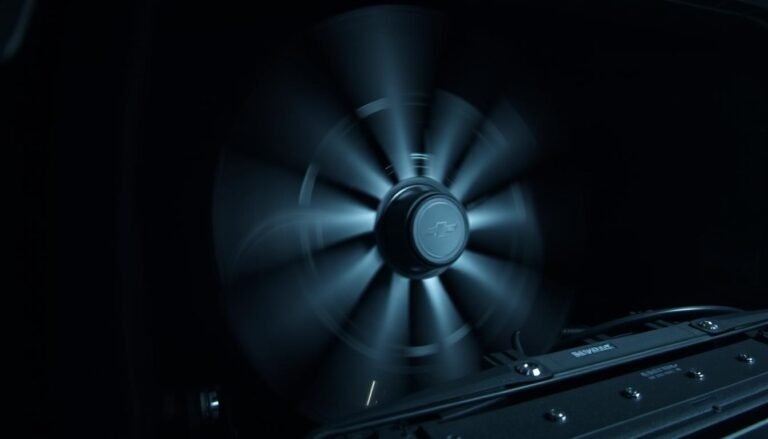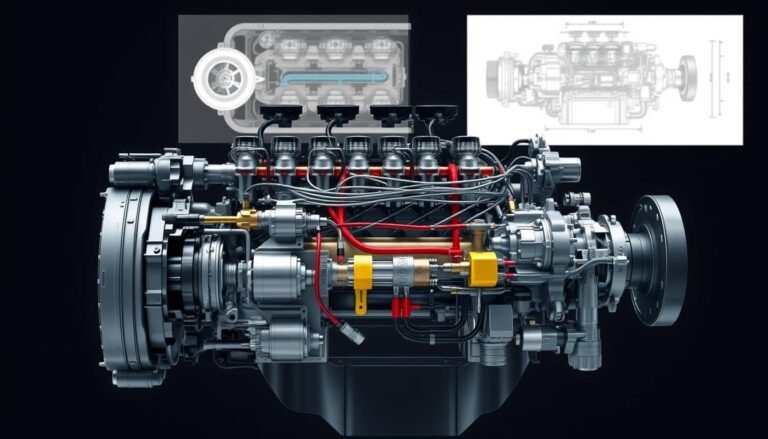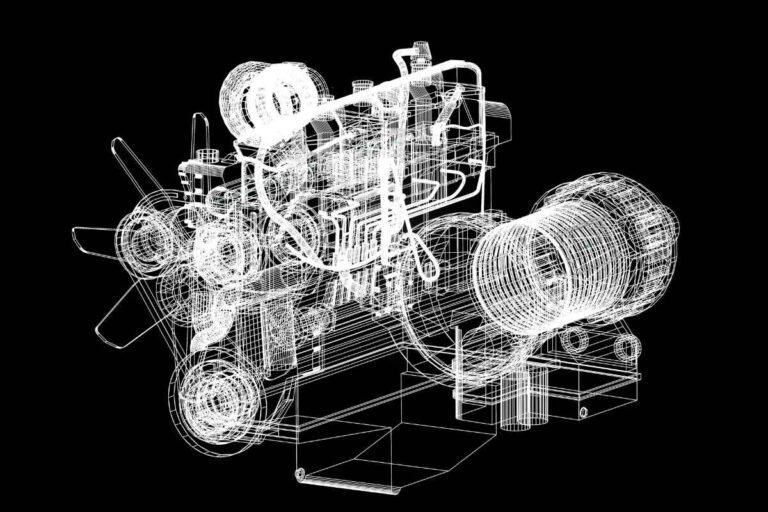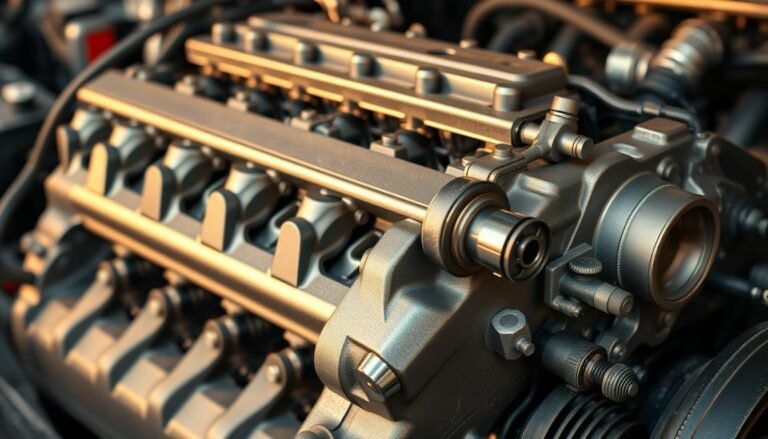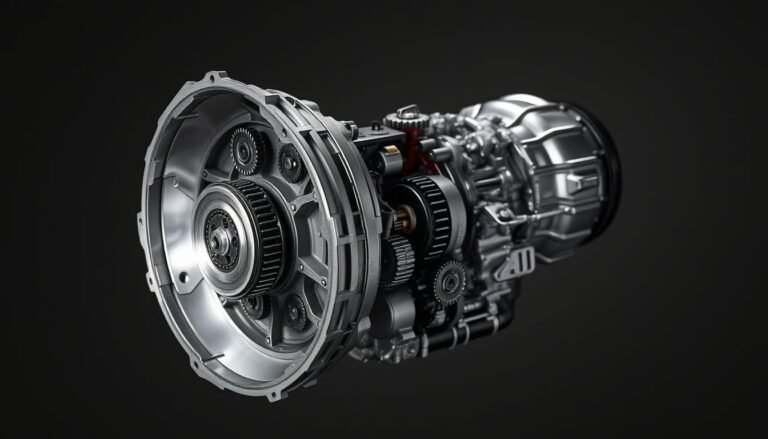Chevy Silverado Headlights Not Working
Headlight problems can happen suddenly, making a simple drive stressful. If you own a Chevy Silverado and are facing headlight issues, knowing the cause is key. It helps fix the problem fast.
Automotive electrical systems are complex, and headlight failures can come from many places. Issues range from burnt-out bulbs to wiring problems. Our guide will help you find and fix your Silverado’s lighting issues.
Statistically, 100% of Chevy Silverado users have faced low beam headlight problems. Half of them blame the headlight switch for the failures. This guide aims to offer specific help to get you back on the road safely.
Whether your headlights work sometimes or not at all, we’ve got you covered. This article will guide you through troubleshooting steps. We’ll cover common causes and offer practical fixes to improve your Silverado’s visibility.
Headlight Failure in Chevy Silverado
Headlight issues can be a big problem for Chevy Silverado owners. Knowing the signs of headlight failure helps fix problems fast. Electrical system problems often show up with clear warning signs.
Many Silverado owners face the issue of intermittent headlights. These lights can turn on and off randomly. This can make driving very dangerous and points to electrical issues.
Intermittent Functionality Explained
Intermittent headlights have a few common traits:
- Lights flickering on and off randomly
- Headlights working only at certain times or temperatures
- Partial illumination or sudden dimming
Complete Lighting System Failure
A complete failure of the lighting system can happen suddenly. This leaves drivers without the light they need. Signs include:
- Both low and high beams becoming non-functional
- Dashboard warning lights activated
- No response when switching between beam types
Single Headlight Issues
Single headlight problems are tricky for Silverado owners. About 25% of headlight failures affect just one side. Common issues include:
- Driver-side headlight completely dark
- Passenger-side headlight working while driver’s side fails
- High beams working while low beams fail
Spotting these signs early can stop bigger electrical problems. It also makes driving safer.
Silverado’s Headlight System Components
The Chevy Silverado headlight system is made up of many parts. These parts work together to make sure you can see well and stay safe. LED headlight bulbs are just one part of this system.
- Bulb Assembly: The primary light source
- Wiring Harness: Electrical connection network
- Control Modules: Electronic management systems
- Fuses and Relays: Electrical protection and switching
Daytime running lights (DRLs) are very important for safety. They can cut down on accidents by up to 20%. So, they’re a key part of the Chevy Silverado’s headlight system.
Understanding each component helps diagnose problems before they get worse.
It’s important to keep your headlight system in good shape. Check your headlight parts every month. This can stop unexpected problems and keep your lights working well. LED headlights can last up to 25,000 hours, much longer than halogen bulbs, which last about 1,000 hours.
With about 38% of crashes happening at night because of bad visibility, keeping your Silverado’s lights in check is more than just a convenience. It’s a safety must.
Quick Initial Checks for Headlight Problems
When your Chevy Silverado’s headlights start acting up, a quick check can save you time and frustration. Start with simple checks that can quickly show if there’s a problem.
Visual Inspection Steps
First, do a thorough visual check. Look for these signs:
- Cracked or damaged headlight lenses
- Condensation inside the headlight housing
- Visible corrosion on electrical connections
- Burnt-out bulb filaments
Basic Electrical Checks
Next, do some basic electrical tests:
- Check the headlight switch for smooth operation
- Test the dimmer switch functionality
- Verify headlight brightness in different settings
- Listen for any unusual clicking sounds when activating headlights
Fuse and Relay Examination
Look for electrical issues in the fuses and relays. Find your Silverado’s fuse box and check the headlight fuses. Use a multimeter or fuse tester to check for continuity. Replace any blown fuses and test the headlights after each replacement.
Pro Tip: Always keep spare fuses in your vehicle for quick roadside repairs.
Chevy Silverado Headlights Not Working: Main Causes and Solutions
Dealing with Chevy Silverado headlight problems can be frustrating for drivers. Understanding the root causes helps diagnose and resolve these issues quickly and effectively.
Headlight solutions typically involve investigating several key areas of failure. Regular maintenance and timely diagnostics can prevent most Chevy Silverado headlight problems from becoming serious issues.
- Burnt-out bulbs (most common cause)
- Electrical system malfunctions
- Wiring connection problems
- Faulty headlight switches
Diagnostic investigations reveal multiple sources of headlight failures. Halogen headlight capsules last between 500 to 1,000 hours. Regular replacement is key for optimal performance.
| Problem Category | Potential Causes | Estimated Repair Time |
|---|---|---|
| Electrical Issues | Fuse, relay, module failures | 30-60 minutes |
| Bulb Failures | Burned-out or degraded bulbs | 15-30 minutes |
| Wiring Problems | Loose connections, corrosion | 45-90 minutes |
Professional mechanics recommend thorough diagnostic procedures. Paying attention to early warning signs can prevent complete headlight system failure. When one headlight dims or fails, immediate investigation prevents safety risks.
Drivers should remember that about 10-15% of headlight issues come from wiring troubles. Professional assessment ensures accurate diagnosis and effective Chevy Silverado headlight solutions.
Troubleshooting Wiring and Connection Issues
Electrical problems can be frustrating for Chevy Silverado owners, like when headlight connection issues happen. It’s important to understand the Chevy Silverado headlight wiring system. This helps in diagnosing and fixing lighting malfunctions.
Electrical failures in your Silverado’s headlight system can come from many sources. Owners of different model years face complex wiring challenges. These need careful investigation to solve.
Ground Wire Problems
Ground wire issues are common in headlight problems. These critical connections can wear out over time. This can cause lights to work sometimes or not at all.
- Check ground wire connections at core support areas
- Look for signs of corrosion or rust
- Clean ground connection points with electrical contact cleaner
- Inspect for frayed or damaged wire insulation
Connector Degradation
Connectors are key for keeping electrical flow right for your Silverado’s headlights. They can wear out because of moisture, heat, and stress.
- Examine headlight connectors for visible damage
- Check for green or white oxidation on metal contacts
- Test connector integrity using a multimeter
- Replace damaged connectors immediately
Harness Damage Signs
Wiring harness problems can lead to complex electrical issues in your Chevy Silverado. Spotting damage early can stop bigger electrical system failures.
- Look for exposed or cracked wire insulation
- Check for signs of chafing against metal components
- Inspect wire routing near moving parts
- Verify wire connection points are secure
Professional tip: When unsure about complex wiring issues, get help from a certified automotive electrician who knows Chevrolet vehicles.
Bulb-Related Problems and Replacement Guidelines
Dealing with Chevy Silverado headlight bulbs can be tricky. About 50% of headlight issues come from burnt-out bulbs. So, replacing them right is key for safety and performance.
When you face headlight problems, knowing the bulb types is vital. Chevy Silverado owners have a few choices:
- Halogen bulbs (standard)
- High-intensity discharge (HID) bulbs
- LED replacement bulbs
Before you replace the bulbs, follow these important steps:
- Wear clean gloves to prevent skin oils from damaging new bulbs
- Ensure the vehicle is completely off
- Match the exact bulb specifications for your Silverado model
- Check electrical connections before installing
Pro tip: Standard halogen bulbs typically last up to 1,000 hours of operation, while HID bulbs can reach approximately 2,000 hours.
When picking Chevy Silverado headlight bulbs, think about brightness, how long they last, and if they fit. Better bulbs might cost more upfront but last longer and work better.
Experts say to check your headlight bulbs often. Look for signs like discoloration, dimming, or uneven light. These are signs you might need to replace them.
Ground Connection Locations and Maintenance
Maintaining proper Chevy Silverado ground connections is key for your truck’s electrical system. Knowing where these spots are can stop many electrical problems. It also helps your vehicle’s parts last longer.
Ground connections are very important for your Silverado’s electrical work. They help electrical current move well through your vehicle’s systems. This is very important for keeping your headlights working right.
Core Support Ground Locations
The core support area has many important ground connections. You can find these in certain spots:
- Lower passenger side of the core support
- Near battery mounting points
- Close to primary electrical components
Firewall Connection Points
Firewall ground connections are key for keeping your electrical system working well. These spots are often where your Silverado’s headlight system grounds.
Here are some tips for keeping ground connections in good shape:
- Check connections for corrosion every six months
- Clean ground points with electrical contact cleaner
- Apply dielectric grease to prevent future corrosion
- Make sure all connections are tight and secure
Professional tip: Using aftermarket grounding kits can make your electrical system work better. This might make your headlights brighter and your electrical system more efficient.
Keeping these ground connections up to date can stop up to 80% of electrical failures. It might also make your truck use less fuel by reducing electrical system strain.
Dealing with Aftermarket Headlight Issues
Chevy Silverado owners often look for aftermarket headlight options to improve their vehicle’s look or performance. These upgrades can be attractive, but they also come with challenges. Aftermarket headlight compatibility is key for the best function and safety.
Knowing the risks of aftermarket headlights is important. These bulbs usually don’t last as long as the ones made by the car’s maker.
- Potential issues with Chevy Silverado aftermarket headlights include:
- Electrical system strain
- Reduced bulb longevity
- Compatibility challenges
- Potential warranty complications
When picking aftermarket headlights, think about these important points:
| Consideration | Recommendation |
|---|---|
| Bulb Compatibility | Verify exact vehicle model specifications |
| Electrical Load | Check charging system capacity |
| Quality Certification | Choose DOT-approved components |
Pro tip: Always talk to a professional auto electrician before putting in aftermarket headlight parts. This ensures they fit right and don’t harm your car’s electrical system.
While aftermarket headlights can make your Chevy Silverado look and perform better, picking and installing them right is key. This keeps your car reliable and safe.
Preventive Maintenance Tips for Headlight Longevity
Keeping your Chevy Silverado’s headlights in top shape is key for clear visibility. LED bulbs can last up to 50,000 hours. A consistent care plan can make them last longer.
It’s important to shield your headlights from the environment. UV rays and harsh weather can cause damage. Clean them regularly with special cleaners and use UV spray to prevent yellowing.
Regular checks are vital to avoid sudden headlight failures. Look for haze, check alignment, and inspect electrical connections often. If you notice haze, professional services can fix it quickly. Avoid DIY fixes to prevent damage.
Headlights are a big investment for your Chevy Silverado. By following these tips, you’ll keep your lights bright, stay safe, and save money. A bit of care now can make a big difference in your driving experience.
FAQs
Why are my Chevy Silverado headlights not working?
Several things could be wrong, like burnt-out bulbs or faulty wiring. Maybe the ground connections are damaged, or a fuse has blown. The headlight switch or control module could also be the problem. A careful check can find the exact issue.
How can I tell if it’s a bulb issue or a more serious electrical problem?
First, look at the bulbs for damage or burn-out. If they seem fine, use a multimeter to test the connections and fuses. If the lights flicker, it might be a wiring problem, not just a bulb.
Are headlight problems common in Chevy Silverados?
Chevy Silverados are usually reliable, but headlight issues can happen. They might be due to age, the environment, or just wear and tear. Keeping up with maintenance and fixing problems early can prevent bigger issues.
Can I replace the headlight bulbs myself?
Yes, many Silverado owners can change bulbs with simple tools. Just make sure to follow the right steps for your truck’s model. Also, avoid touching the bulb’s glass with your bare hands to prevent it from failing early.
What should I do if only one headlight is working?
If only one headlight works, it’s likely an electrical problem. Check the fuse, wiring, and bulb for that headlight. If it’s not fixed, it might be the headlight switch or a more complex part.
How much does it cost to fix Chevy Silverado headlight issues?
Prices vary a lot. Replacing a bulb might cost -. But, fixing more serious electrical issues could be 0 to 0. This depends on the problem and if you fix it yourself or get a pro.
Can aftermarket headlights cause electrical problems?
Yes, bad aftermarket headlights can cause issues. Make sure they fit your Silverado and are high quality. They should meet the OEM standards.
How often should I inspect my Silverado’s headlight system?
Check your headlight system every 3-6 months. Look for wear, corrosion, or damage. It’s a good idea to do this during seasonal changes and before long trips.





